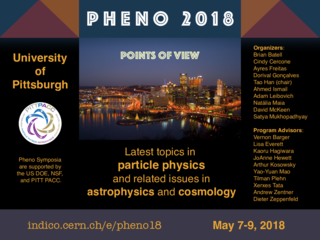We study the impact of anomalous gauge boson and fermion couplings on the production of W+W− pairs at the LHC. Although constrained to be very small by LEP, anomalous fermion-gauge boson couplings can have important effects in LHC fits to anomalous couplings. Addtionally, we show that the QCD corrections have important effects, in particular when one W boson is longitudinally polarized and...
Precision measurement at the LHC can provide probes of new physics which are com- plementary to direct searches. The high energy distribution of di-boson is a promising place, with the possibility of significant improvement with the accumulation of data. We focus on the semi-lepton final states, and make projections of the reach for future runs of the LHC with integrated luminosities of 300...
A summary of searches for heavy resonances with masses exceeding 1 TeV decaying into dibosons is presented, performed on data produced by LHC pp collisions at $\sqrt{s}$ = 13 TeV and collected with the CMS detector during 2016 and 2017. The common feature of these analyses is the boosted topology, namely the decay products of the considered bosons (both electroweak W, Z bosons and the Higgs...
We demonstrate the use of the Matrix Element Method (MEM) for the measurement of masses,
widths, and couplings in the case of single or pair-production of semi-invisibly decaying resonances.
For definiteness, we consider the two-body decay of a generic resonance to a visible particle from
the Standard Model (SM), and a massive invisible particle. It is well known that the mass difference
can...
We study the LHC sensitivity to a minimal, $W'$-based resolution to the $R(D^{(\ast)})$ anomalies using $b$-tags, hadronic $\tau$s, and missing energy. We show that the $b$-tag requirement can improve the reach over the inclusive analysis for $W'$ masses of 750 GeV and below.
Many extensions of the standard model (including SUSY) predict new particles with long lifetimes, such that the position of their decay is measurably displaced from their production vertex, and particles that give rise to other non-conventional signatures. We present recent results of searches for long-lived particles and other non-conventional signatures obtained using data recorded by the...
Future electron-proton (ep) collider proposals like the LHeC or the FCC-eh can supply 1/ab of collisions with a center-of-mass energy in the TeV range, while maintaining a clean experimental environment more commonly associated with lepton colliders. This makes them ideally suited to probe BSM signatures with final states that look like "hadronic noise" in the high-energy, pile-up-rich...
